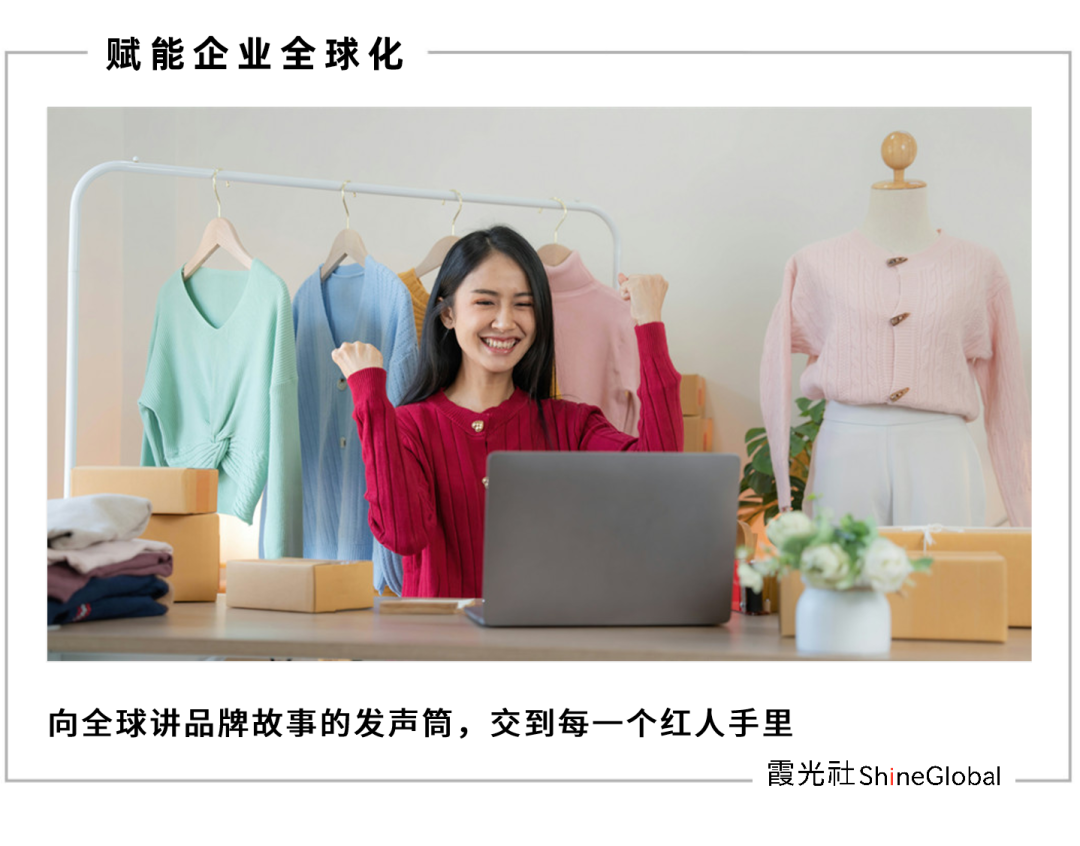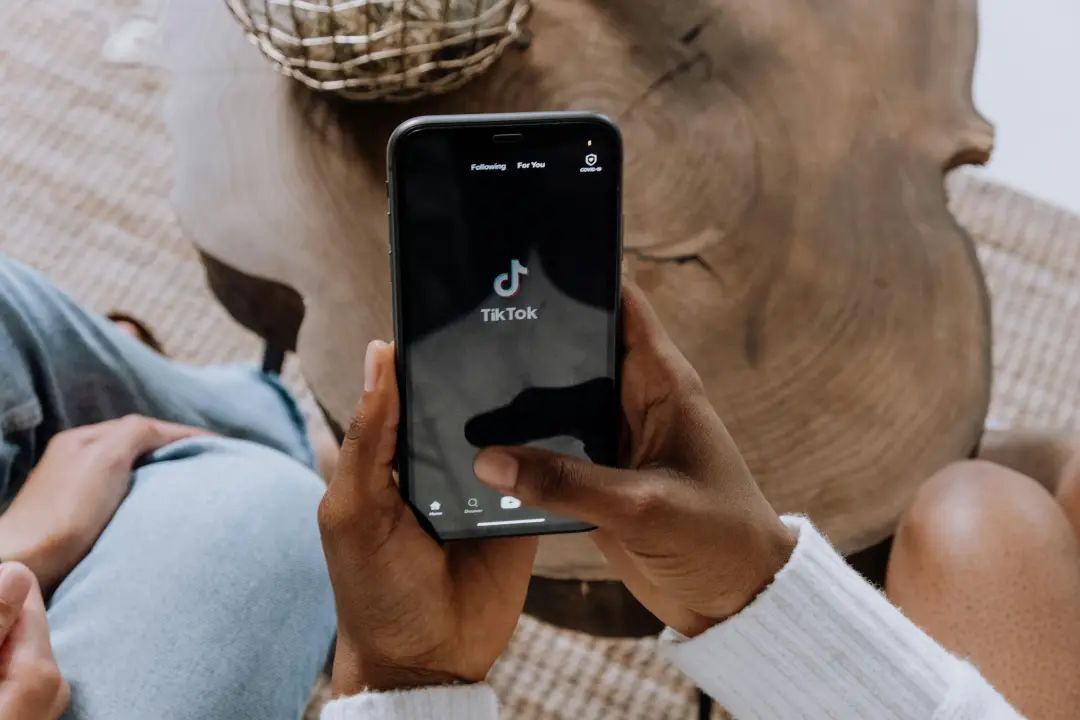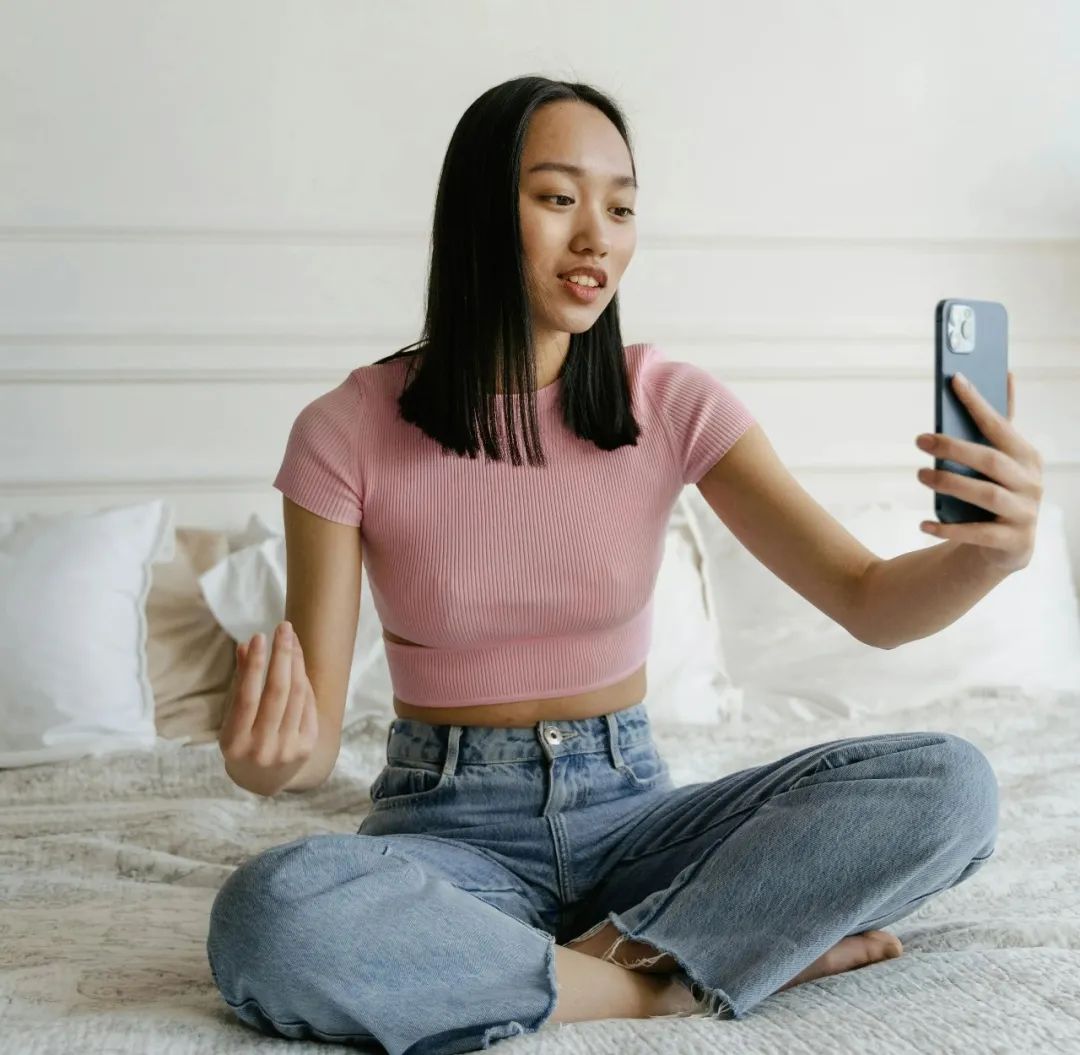In the AI Era, Global Brand Marketing Has Passed the Baton to Influencers
![]() 05/21 2025
05/21 2025
![]() 548
548

Author | Yangzi
In the AI era, the rules of the game for overseas marketing have shifted dramatically.
"Overseas, every influencer is akin to a billboard, embodying traffic. The crux of current competition lies in identifying pioneers who adeptly utilize these billboards," a North American cross-border merchant revealed to Xiaguangshe. As short videos increasingly dominate users' time, influencer marketing has ascended to a pivotal position. "Because where the traffic flows, the money follows."
Data from the social media management platform Sprout Social indicates that 59% of marketers plan to collaborate with more internet celebrities this year compared to 2024. Influencer marketing is progressively gaining prominence, and global brands are no longer satisfied with traditional advertising channels, instead leveraging the influence of overseas internet celebrities to achieve their brand objectives.
Traditionally, advertising marks the final step in business commercialization but the initial step in reaching consumers. Building a brand in the global market resembles being a "commercial director," necessitating both artistic creativity and engineering precision. In the AI era, the artistic creation of "commercial directors" has become more refined. As more user searches transition from Google Chrome and Baidu to ChatGPT and Deepseek, AI filters effective advertisements, providing users with a "clean" answer. Consequently, native advertising based on social media is emerging as a more mainstream choice.
Furthermore, compared to traditional channels, the traffic cost of overseas influencer marketing is relatively low yet more precise. The founder of a North American MCN company informed Xiaguangshe that the click-through rate of overseas influencer recommendations can reach 5%, three percentage points higher than traditional advertising. The purchase conversion rate soars tenfold, and the ROI ratio triples.
Currently, as influencer marketing gains significance, "commercial directors" require a keen sense to identify compatible influencers and construct an aesthetic system that aligns seamlessly with the brand. Despite recognizing the importance of influencer marketing, Chinese brands struggle to swiftly identify aesthetically compatible influencers due to issues such as information opacity and inefficient communication.

AI may hold the key to resolving this issue. At the third Sequoia Capital AI Summit, a new consensus emerged: The next wave of AI is not about selling tools but delivering benefits. Whoever commercializes "benefits" first will capture the next tenfold market.
This is particularly true for overseas influencer marketing. Chen Daiyi, the founder of AI overseas influencer marketing company VANZO MEDIA, told Xiaguangshe, "If the three primary pain points of influencer marketing—price, delivery time, and content—can be fully integrated and coordinated through AI, it will herald a more elegant marketing paradigm for Chinese brands."
According to Statista data, the global KOL market size surpassed $10 billion in 2023 and is projected to exceed $20 billion by 2025. The demand for influencer marketing, fueled by the global decentralized consumer market, is also surging. In the Southeast Asian market, where internet market penetration exceeds 70%, the growth rate is the fastest, with a CAGR of 45%. The United States' influencer marketing expenditure accounts for 32% of the global share, with a CAGR of 18%. The market shares of emerging markets in Europe, the Middle East, and Latin America are 4.5 billion, 800 million, and 1.5 billion, respectively.
This article delves into the differentiated marketing strategies between China and foreign countries in the global influencer marketing industry, as well as the new opportunities that may arise amidst these changes.

In 2019, Douyin's daily active users surpassed 600 million, reaching the growth ceiling, prompting many MCN companies and short video marketing firms to look overseas. People anticipated that TikTok would replicate Douyin's success story in the overseas market.

The overseas market undeniably holds vast potential, but there are significant disparities in the business models of influencers between China and foreign countries. Initially, influencers in the United States emerged simply to share content, hence they are often referred to as creators because their primary product is content. This approach garners respect from fans, making them more inclined to view themselves as artists.
In contrast, China's influencer marketing model is predominantly driven by MCN companies, typically adopting the "internet celebrity + e-commerce + live streaming" method to boost sales. Influencers function as a link in this chain, reflecting a business model unique to the Chinese internet. Essentially, the internet celebrity economy is largely fueled by e-commerce, so domestic influencers often prioritize their own IP as the main product.
In other words, influencers in China are cultivated, whereas overseas, they grow organically, gradually stepping into the spotlight and becoming a key force in brand marketing amid traffic shifts. Consequently, many Chinese MCNs encounter cultural incompatibilities when expanding overseas, such as overseas influencers valuing freedom and being less compliant, or even raising their prices, which are common challenges faced by overseas MCNs. This leads to a significant difference in influencer marketing between China and the United States: who controls the content?
Stylistically, unlike domestic influencers with strong labels, those who gain popularity on TikTok tend to be less "glamorous" and more relatable, making viewers feel more intimate and attracting a larger fan base. These influencers safeguard their style and stance, retaining fans through content and personal flair. If an MCN company provides influencers with a scripted performance, they may feel "offended," which explains the incompatibility between the two sides.
Hence, there are also disparities in the outcomes of influencer collaborations between domestic and foreign brands. Brands establish deep collaborations with overseas influencers to convey brand image and values through original content, often emphasizing storytelling, creativity, and emotional resonance. In China, influencer marketing prioritizes product promotion and sales conversion, tending to swiftly drive sales growth through live streaming and other forms. This difference poses a dilemma for overseas MCNs, who often struggle to manage "free-spirited" overseas influencers.
Thomas, the founder of overseas influencer marketing company Bandalabs, shared that overseas influencers generally do not attempt to decipher implicit meanings. "Just outline what needs to be done and let them follow the script. If there are no issues, they will execute it. Take it slow, let them feel recognized and grow. Don't expect the rapid pace of the Chinese approach. As long as they outperform other local influencers, isn't that sufficient?"
Another notable difference lies in the decentralized nature of social media in North America. Unlike the domestic landscape dominated by Douyin with 1.1 billion MAU, Americans' user habits are highly fragmented across various platforms. In China, brands can connect with all KOLs on ByteDance's Star Chart, a result of the aforementioned business model. However, overseas, the relationship between platforms and agencies is more independent, with platforms hoping third-party service providers can better commercialize the influencer ecosystem. This results in over 85% of influencer collaboration orders being generated by third parties.
For brands based in China, an even greater challenge arises in the initial step of establishing connections with influencers. In the North American social environment, brands often reach out to influencers through in-app messages or emails, but the success rate of in-app messages is less than 2%, and email outreach, while having the highest reply rate, consumes significant manpower. Even when brands need to map vertical influencers through a meticulous search process, they still cannot accurately gauge the content of the influencers.
Weak cooperation constraints and severe information asymmetry have transformed cross-border influencer marketing into a risky field akin to resource gambling. Brands face a double dilemma: they must cooperate while respecting the freedom of the overseas content ecosystem but cannot enforce agreements with mandatory force. Under such circumstances, the batch cooperation model has gradually become crucial for breaking the deadlock—businesses win by quantity, increasing coverage to boost success probability. However, even so, the conversion rate from email invitations to fan portrait matching to negotiation to collaboration content discussion to advertisement publication is less than 1%.
Nevertheless, it cannot be overlooked that although influencer marketing poses a challenging problem in overseas marketing, it is a vital step in unlocking new ideas. According to industry practitioners, when Jackery, a leading global outdoor power supply brand, entered the American market, due to cultural mismatch with hard-core tech-style content, the conversion rate in the first month was only 30% of expectations. But by transforming the obscure "1000Wh capacity" terminology into a real-life scenario of "maintaining RV power supply for 48 hours in a blizzard" and collaborating with influencers like @SurvivalPrepper specializing in wilderness survival, its market share in the United States surged from fifth to second.

For overseas influencer marketing, the industry's growth phase, information opacity, and lack of industry norms present opportunities for digital revolution to shine. So, can AI address the pain points of information opacity and low communication efficiency?

"Fake traffic creates a price bubble," Chen Daiyi told Xiaguangshe. "Influencers typically have 25% fake interaction data and 15% fake fan data, causing brands to lose about 12%-18% of their annual budget on average." Due to the lack of data dimensions and information opacity, the completeness of public data on influencers is less than 60%, making it challenging to standardize the real prices and delivery times of overseas influencers.
However, establishing order amidst chaos is not entirely without leverage. In the view of VANZO founder Chen Daiyi, the unclear and opaque aspects of influencer marketing can be categorized into three parts: content, delivery time, and price.
Specifically, content is the underlying competitiveness of influencer marketing and the core criterion for brands to select influencers. Relying solely on subjective experience and manpower to screen influencers leads to inefficiencies in matching. Secondly, delivery time also plays a crucial role in influencer marketing. If the probability of influencer delivery delays is 20%-25%, with a 15%-20% decrease in interaction for each day of delay, and delays potentially disrupting the overall marketing chain, delivery time is a key factor in balancing time cost and marketing rhythm.
Thirdly, there are even greater expectations deviations regarding price. Since influencers lack access to sufficient price resources and understanding of the market's overall quotation, different quotes for the same influencer may vary by 2-5 times. Brands' active quotes are often lower than fair prices, leading to price expectation mismatches and failed collaborations.
The opacity of information in content, delivery time, and price has given rise to new pain points: inefficiency and an unappealing business model. Therefore, overseas markets have also established Influencer Marketing positions, used to communicate with influencers at any time. This position does not pose significant technical barriers but requires manual effort to advance each aspect of collaboration with influencers.

Business specialists identify leads and establish connections with KOLs through cold emails, negotiate contract details, and need to urge influencers to complete script handovers and other details. Even in the delivery phase, there is no standardized industrial solution between brands and influencers, and the non-standardized links create significant communication thresholds.
In other words, the core of traditional influencer marketing service agencies lies in the experience-based approach of business specialists, who heavily rely on manpower to complete multiple links from influencer search, negotiation, script production, content publication, to effect summary reports.
It's labor-intensive, but the barrier lies in the people themselves. "It's like a manual liaison workshop," an employee of an overseas MCN company explained to Xiaguangshe. With AI's assistance in influencer marketing, the aforementioned issues of information opacity and inefficient communication have the potential to be resolved.
First, in the data segment, we leverage a vast database of prices and blogger personas amassed through negotiations. With the assistance of AI multi-dimensional modeling, we facilitate automated searches. Multi-modality also addresses content challenges by conducting cross-modal structural analysis, dissecting historical popular content in terms of visual composition, copywriting style, emotional inclination, and audience engagement, thereby clarifying content positioning.
Second, in the negotiation segment, which is labor-intensive, AI agents enhance negotiation accuracy by 30% and elevate overall marketing ROI by over 50%. This directly impacts budget utilization and influencer cost-effectiveness. As per industry experts in overseas influencer marketing, 70% of manual negotiation time is wasted on price haggling, which AI can significantly improve.
Moreover, AI enables us to predict and attribute marketing effects through correlation analysis of "content-traffic-conversion," uncovering the factors behind viral content.
According to VANZO founder Chen Daiyi, to optimize content planning and data monitoring, they established an AI mid-platform team named "Vanzo Lightning." This team can propose a list of internet celebrities 24/7, with an 80% match rate for submissions, and complete signings within five days. It also tailors creative planning for individual influencers, ensuring timely communication within 18 hours.
In essence, AI agents have transformed influencer marketing from "labor-intensive" to "algorithm-driven," resolving key issues related to pricing, delivery time, and content. This shift converts previously non-standard experiential judgments into quantifiable prediction models.
Furthermore, AI can address issues like false traffic and incomplete information.
VANZO is not alone in its pursuit of AI-driven standardization in influencer marketing. For instance, AI marketing firm Aha Lab, backed by investments from Jinqiu Fund and GSR Ventures, aims to create a new paradigm for AI influencer marketing.

In 2024, China's listed companies witnessed another nearly 10% growth in overseas revenue, building on last year's double-digit increase. For the first time, overseas revenue surpassed the 10 trillion mark, accounting for 13.8% of total revenue. These figures underscore the clearer path for Chinese brands to go global, with a more pronounced globalization narrative. Amidst the aspiration to reach broader markets, the challenge lies not merely in numerical growth but in establishing a cultural resonance.
Cara, based in Munich and specializing in overseas influencer marketing, shared her insights with Xiaguang Society: "The primary hurdle for Chinese brands going global is not product quality but cultural translation. We need a team that understands both Eastern supply chains and Western narratives." AI is bridging this cross-cultural gap, as influencer service providers experiment with self-developed automation systems that combine AI with manual review to streamline influencer selection. This allows brand owners to efficiently communicate with KOLs/KOCs, bypassing inefficient traditional intermediaries.
Increasingly, Chinese individuals worldwide are connecting with local influencers. According to influencer marketing professionals, when employees work as digital nomads, salespeople living abroad can accumulate local influencer resources and better comprehend local needs, providing initial data inputs for AI.
Currently, overseas influencer marketing is nascent but promising. The consensus is unequivocal: great brands should transcend geographical boundaries, and influencer marketing serves as the megaphone that amplifies their voices. In the future, if more overseas influencers advocate for Chinese brands, it will likely be due to AI's efforts in bridging communication and understanding.





